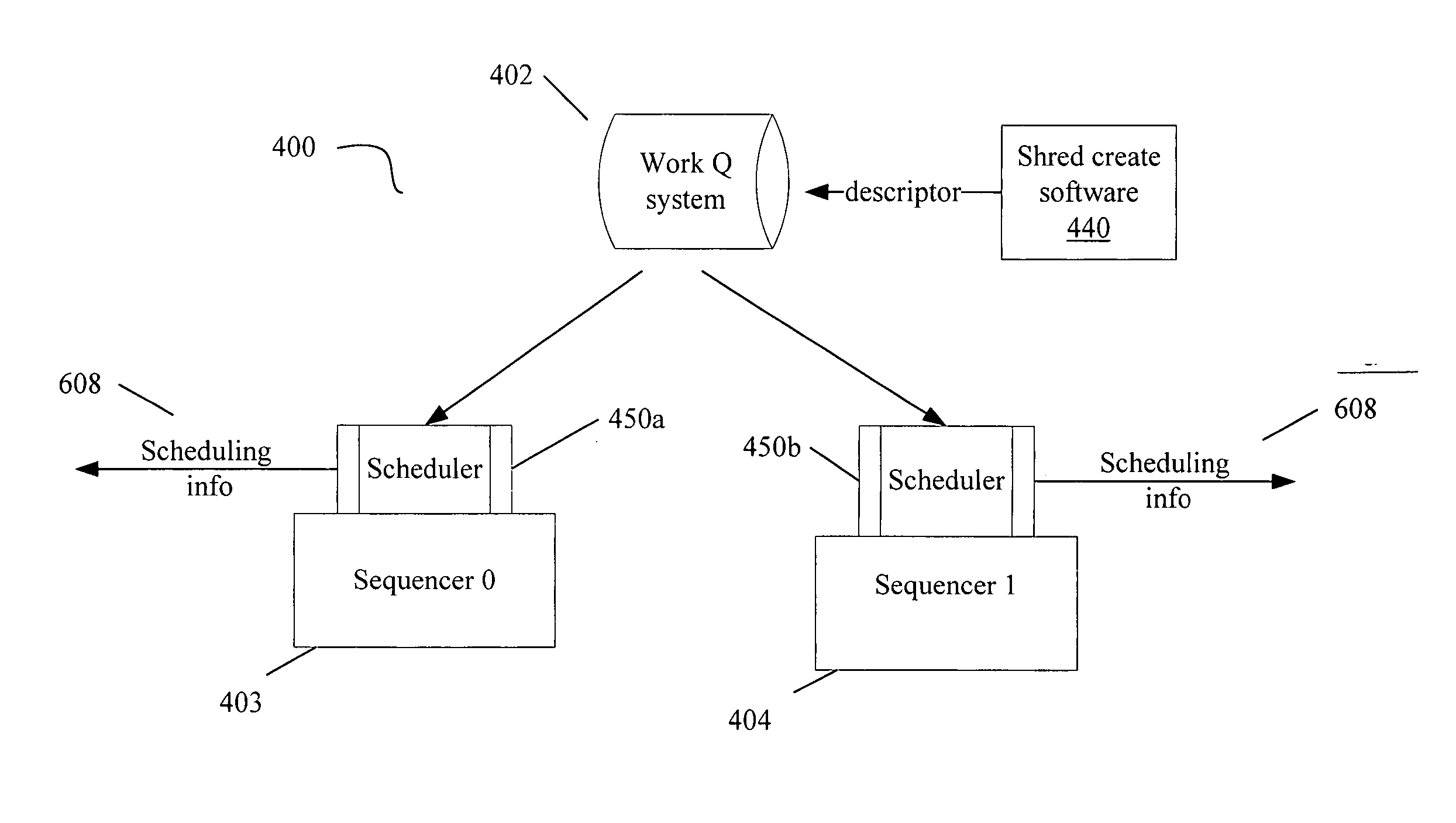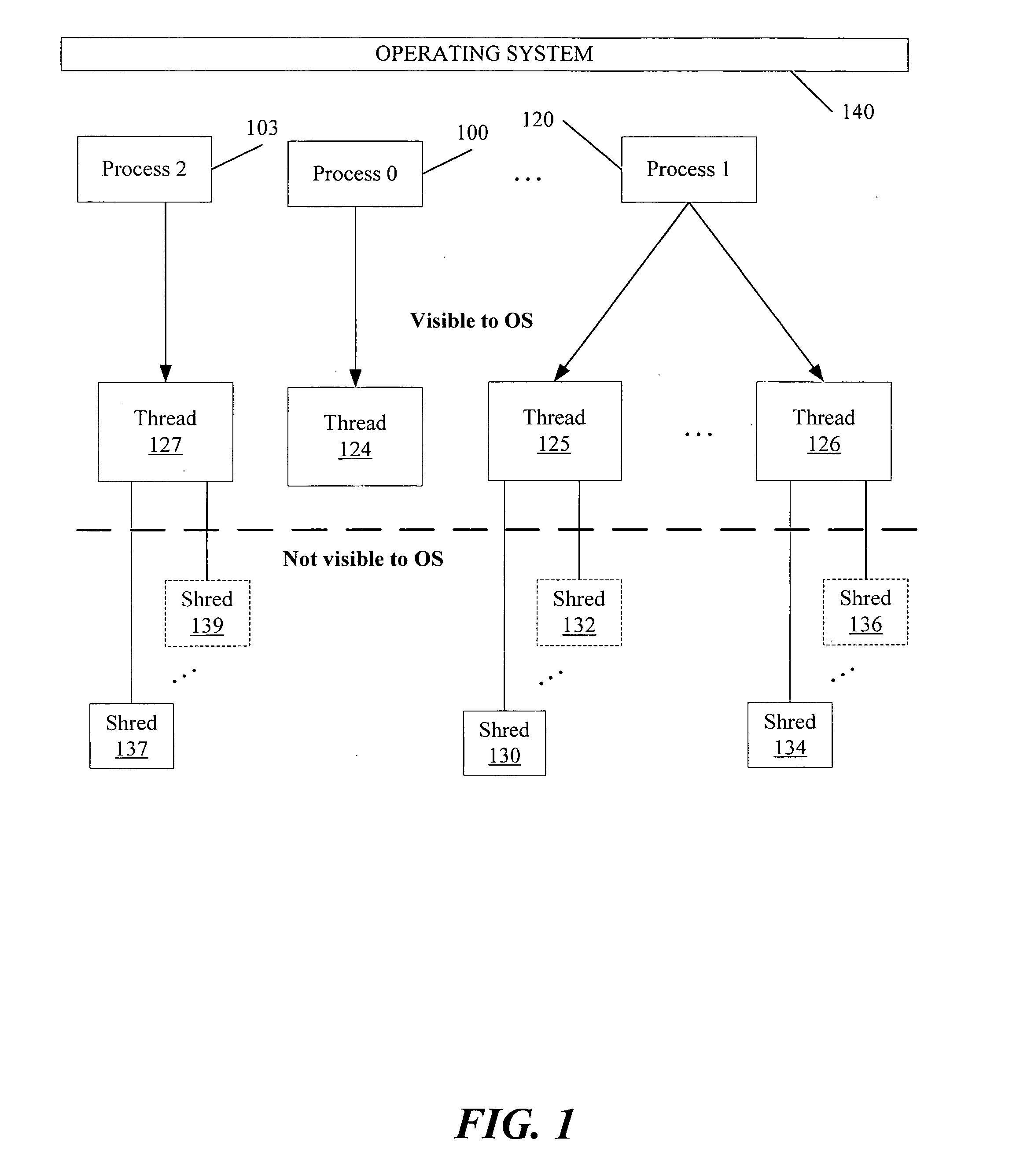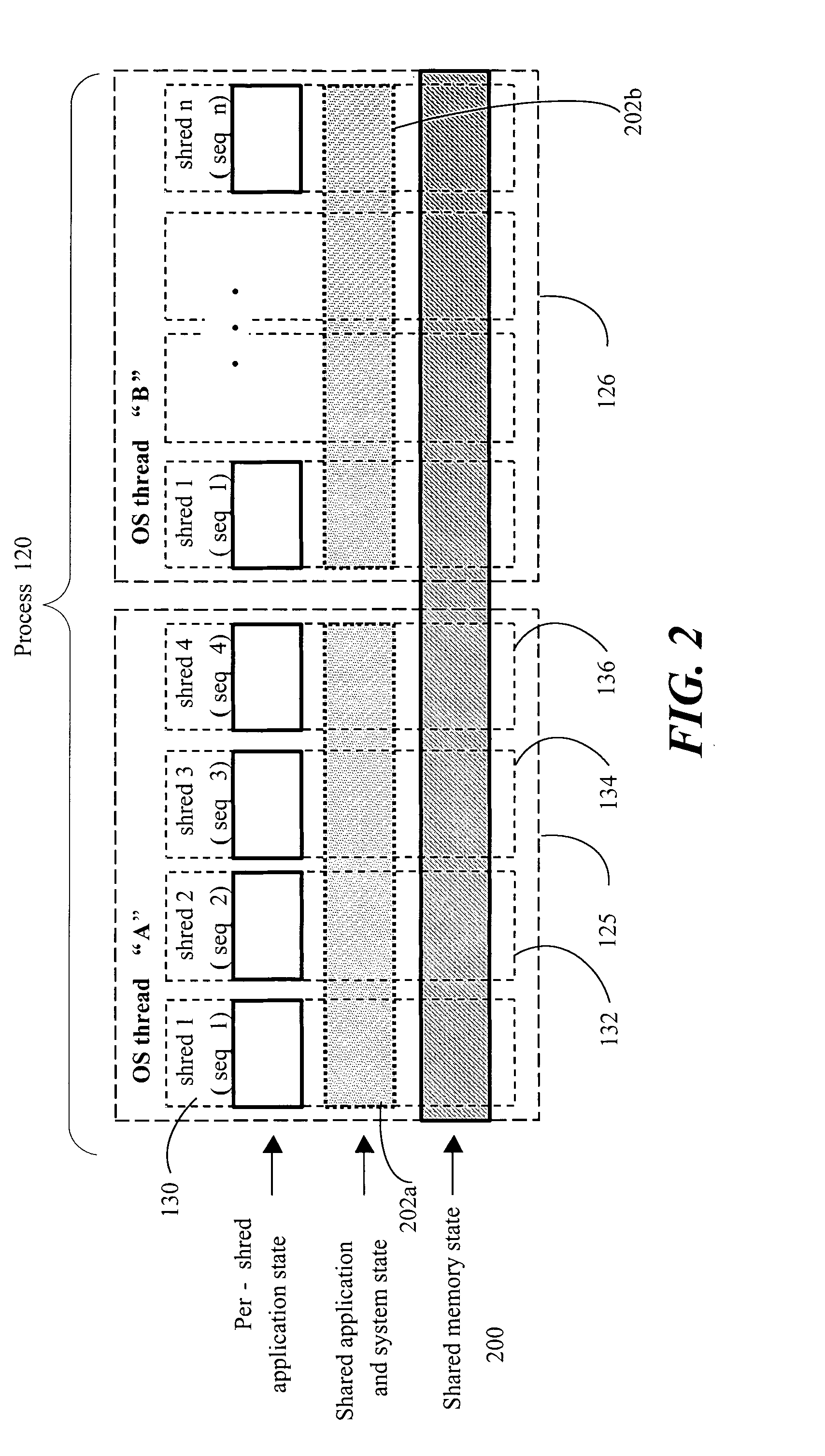Scheduling optimizations for user-level threads
a thread scheduling and user-level technology, applied in the field of information processing systems, can solve the problems of the inability of the operating system application to schedule threads without negatively affecting performance, and the inability of the operating system to scale well
- Summary
- Abstract
- Description
- Claims
- Application Information
AI Technical Summary
Problems solved by technology
Method used
Image
Examples
Embodiment Construction
[0021] The following discussion describes selected embodiments of methods, systems and articles of manufacture to improve efficiency of scheduling for multiple concurrently-executed user-level threads of execution (referred to as “shreds”) that are not created or scheduled by the operating system. The shreds are instead scheduled by a feedback-driven scheduler that can dynamically adapt shred scheduling based on runtime feedback and prediction of inter-shred correlations.
[0022] The shreds may be scheduled to run on one or more OS-sequestered sequencers. The OS-sequestered sequencers are sometimes referred to herein as “OS-invisible”; the operating system does not schedule work on such sequencers. The mechanisms described herein may be utilized with single-core or multi-core multithreading systems. In the following description, numerous specific details such as processor types, multithreading environments, system configurations, and numbers and topology of sequencers in a multi-sequ...
PUM
 Login to View More
Login to View More Abstract
Description
Claims
Application Information
 Login to View More
Login to View More - R&D
- Intellectual Property
- Life Sciences
- Materials
- Tech Scout
- Unparalleled Data Quality
- Higher Quality Content
- 60% Fewer Hallucinations
Browse by: Latest US Patents, China's latest patents, Technical Efficacy Thesaurus, Application Domain, Technology Topic, Popular Technical Reports.
© 2025 PatSnap. All rights reserved.Legal|Privacy policy|Modern Slavery Act Transparency Statement|Sitemap|About US| Contact US: help@patsnap.com



